What To Expect At A Hearing Aid Fitting
At a hearing aid fitting, you can expect a personalized experience where the devices are adjusted to match your specific hearing needs. The hearing specialist will fine-tune the hearing aids based on your audiogram results to ensure optimal sound quality. You’ll learn how to properly insert, remove, and care for your devices, as well as how to adjust the settings in different environments. Follow-up appointments are often scheduled to make further adjustments and ensure you're comfortable with the fit and performance.
Hearing Aid Fitting Will Help You Get The Best Sound
Yes, a hearing aid fitting is essential for achieving the best possible sound quality. During the fitting, the hearing specialist adjusts the devices to match your unique hearing needs and preferences, ensuring that sounds are clear and balanced. The fitting also allows you to test how the hearing aids perform in different environments, such as quiet rooms or noisy spaces. Regular follow-ups after the fitting can further refine the settings to optimize your listening experience over time.

What Is Real Ear Measurement?
Real Ear Measurement (REM) is a technique used during a hearing aid fitting to ensure the device is properly adjusted to your specific hearing needs. It involves placing a tiny microphone in your ear canal to measure how sound behaves inside your ear with the hearing aid in place. This allows the audiologist to fine-tune the hearing aid to deliver the best sound quality based on your unique ear acoustics, ensuring the amplification is both accurate and comfortable for everyday listening.
What Follow-up Care Do Your Hearing Aids Need?
Hearing aids require regular follow-up care to maintain optimal performance. This includes routine cleaning to remove earwax or debris, checking for any wear or damage to parts, and ensuring the devices are functioning properly. Additionally, periodic adjustments by a hearing specialist may be necessary to fine-tune the settings based on changes in your hearing or to adapt to different listening environments. Many clinics offer follow-up visits to make sure your hearing aids continue to provide the best possible sound quality and comfort.
How To Get Used To Your Hearing Aids After a Fitting
Getting used to hearing aids takes time and patience. Start by wearing them for a few hours each day, gradually increasing the duration as your ears and brain adjust to processing new sounds. It's normal for everyday noises, like rustling paper or footsteps, to sound louder at first, but over time, these will become more natural.
Practice in different environments, and don't hesitate to visit your hearing specialist for adjustments or support if needed. Consistent use and follow-up care will help you get the most out of your devices.
